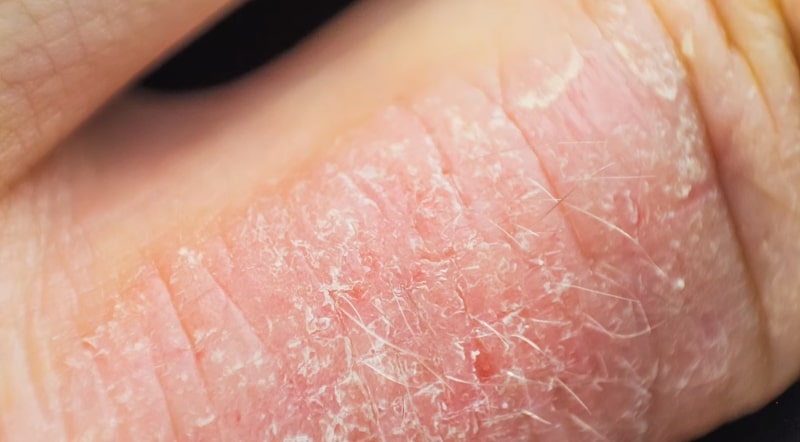Mold toxicity, or Mycotoxicosis, occurs when someone is exposed to toxic mold.
While most molds are harmless, certain microscopic fungi can pose serious health risks.
10 Symptoms To Identify Mold Toxicity
Respiratory Problems

One of the earliest and most common symptoms of mold toxicity is respiratory distress.
Individuals exposed to toxic mold might experience coughing, wheezing, shortness of breath, and even asthma attacks.
If these respiratory issues worsen in a specific room or area, it might be contaminated with toxic mold.
People who are exposed to mold are 30% to 50% more at risk of asthma, coughing, and wheezing.
Allergic Reactions
Toxic mold can also trigger allergic reactions in sensitive individuals.
Symptoms may include sneezing, a runny or stuffy nose, itchy or watery eyes, and skin rashes.
If someone is experiencing these symptoms, toxic mold could be the culprit.
Headaches
Frequent headaches, including migraines, can indicate exposure to toxic mold. This can lead to inflammation and affect blood vessels in the brain, causing significant discomfort.
Keeping your environment clean and free of mold is essential to avoid these issues.
Unexplained Fatigue

Mold contamination can also cause unexplained fatigue. Mold toxins can disrupt normal bodily functions, leading to persistent tiredness even after adequate rest.
This fatigue can severely impact daily life and productivity.
Cognitive Impairment
Exposure to toxic mold can result in cognitive impairment, including memory problems, difficulty concentrating, and brain fog.
If you notice these symptoms, it’s crucial to address potential mold exposure promptly.
Joint and Muscle Pain
Unexplained joint and muscle pain can also be a symptom of mold toxicity.
Exposure to toxic fungi can cause inflammation and immune system dysfunction, leading to various discomforts and impacting overall well-being.
Skin Issues

Mold exposure can cause skin problems such as rashes, hives, and dermatitis.
Spores and mold toxins can irritate the skin, leading to these dermatological issues.
Maintaining a clean environment is crucial to prevent mold-related skin problems.
Digestive Problems
Individuals exposed to toxic mold may experience digestive problems, including nausea, abdominal pain, and diarrhea.
Mold toxins can disrupt the digestive system, leading to these gastrointestinal complaints.
Mood Changes
Mold toxicity can affect mental health, leading to mood swings, anxiety, and depression.
Constant exposure to toxic mold can weaken one’s mental state and significantly impact overall well-being.
Sinus Infections
Sinus infections and sinusitis are also signs of mold toxicity.
Mold spores can block sinus passages, leading to chronic sinus issues, extreme pain, and frequent infections, which can adversely affect overall health.
Don’t Ignore the Silent Invader
Mold toxicity is a silent invader that can severely impact your overall well-being. Recognizing the warning signs of toxic mold exposure is crucial for taking timely action to eliminate the source of the problem. The best way to tackle this issue is by identifying areas of mold contamination and consulting a professional mold inspector for a thorough assessment.
If you experience any symptoms of mold toxicity, consult a healthcare provider immediately. Take appropriate measures to mitigate its effects and identify the problem for proper recovery.









